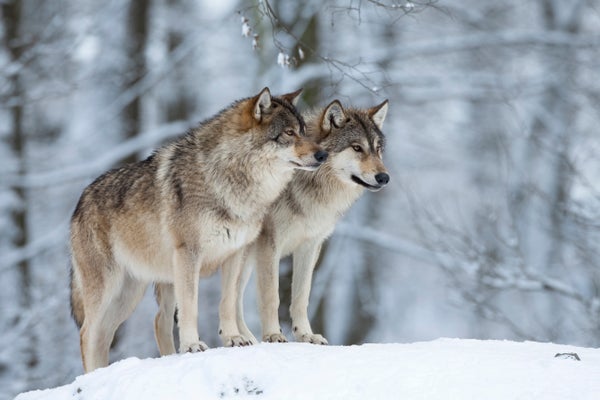The Trump administration wants to loosen protections for endangered species while scientists brace for mass die-offs to accelerate globally.
New research from the Zoological Society of London suggests climate change is driving more species toward extinction, especially birds. Meanwhile, scientists are trying to design the best way to pick which species get scarce conservation resources—and which will be allowed to disappear.
“We are in the middle of a mass extinction,” said Will Pearse, a Utah State University professor and member of the international team of scientists who analyzed how to maintain biodiversity as rare species die faster than biologists can study them. The results were published yesterday in the journal Nature Communications.
On supporting science journalism
If you're enjoying this article, consider supporting our award-winning journalism by subscribing. By purchasing a subscription you are helping to ensure the future of impactful stories about the discoveries and ideas shaping our world today.
“So many things are going extinct and we’re losing so much value for humans, we are having to triage ... to save as much as we can in an efficient way,” Pearse said.
The ongoing mass extinction is the sixth in Earth’s history, putting it in the same league as the end of the dinosaurs. According to conservative estimates published in Proceedings of the National Academy of Sciences in July last year, about 200 vertebrate species have gone extinct in the last century—up to 100 times faster than the natural rate. That doesn’t count the species that likely died out before human discovery.
Human land use remains one of the biggest drivers of population declines, and that’s where the Trump administration is proposing some of the biggest changes to the Endangered Species Act.
The Interior Department under Trump is rolling out a regulatory overhaul that could cut the areas designated as critical habitat, make it harder to list an animal as threatened, open the possibility of including cost-benefit analysis in listing decisions, and relax prohibitions on disturbing or killing threatened species (Greenwire, July 20).
Researchers are increasingly taking notice of how rising temperatures fit into the picture. A study published in Proceedings of the Royal Sociey B in June predicts that climate change could become the greatest threat to biodiversity by 2070.
The study published yesterday in Global Change Biology by the Zoological Society of London brings that threat into sharper focus.
Based on an analysis of 987 populations of 481 species, the researchers found a “strong signal” that warming leads to population declines, even when controlling for factors like protected areas and land use.
Regions that have seen the fastest warming have also seen the steepest population declines, said Robin Freeman, one of the study’s authors and head of the Zoological Society of London’s Indicators and Assessments Unit.
Warming also hit birds the hardest, with the worst-case warming scenarios pointed to mortality rates doubling, the researchers said. They said that might be because birds are more sensitive than mammals to disruptions in breeding schedules and the availability of resources.
Proponents of overhauling the Endangered Species Act argue that the act has made it too onerous for business and landowners. But critics say the Trump administration is threatening areas that could be central to some species’ survival.
Protected areas could offer some species a buffer to adapt to climate change, Freeman said, calling them “one of America’s best assets” for cushioning the impact of warming temperatures.
The Interior Department did not respond to a request for comment for this story.
The United States already has a massive backlog of species that demand protection, and this move sells them out in favor of short-term economic interests, said Andrew Rosenberg, director of the Union of Concerned Scientists’ Center for Science and Democracy.
Rosenberg, who used to oversee endangered species protections for NOAA, said the Endangered Species Act has a nearly perfect record of halting the oblivion of endangered species, even if recovery has proved more difficult. But, he said, it would be better for everyone if the government could halt population declines before they needed the Endangered Species Act.
That might be impossible for this administration, he said.
“If you’re saying, ‘Let’s not talk about climate change, but we’re going to protect species or we’re going to improve harvests’... it’s oxymoronic,” he said.
Reprinted from Climatewire with permission from E&E News. E&E provides daily coverage of essential energy and environmental news at www.eenews.net.
